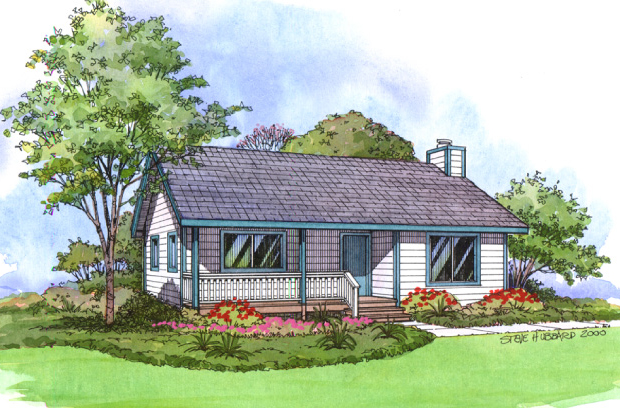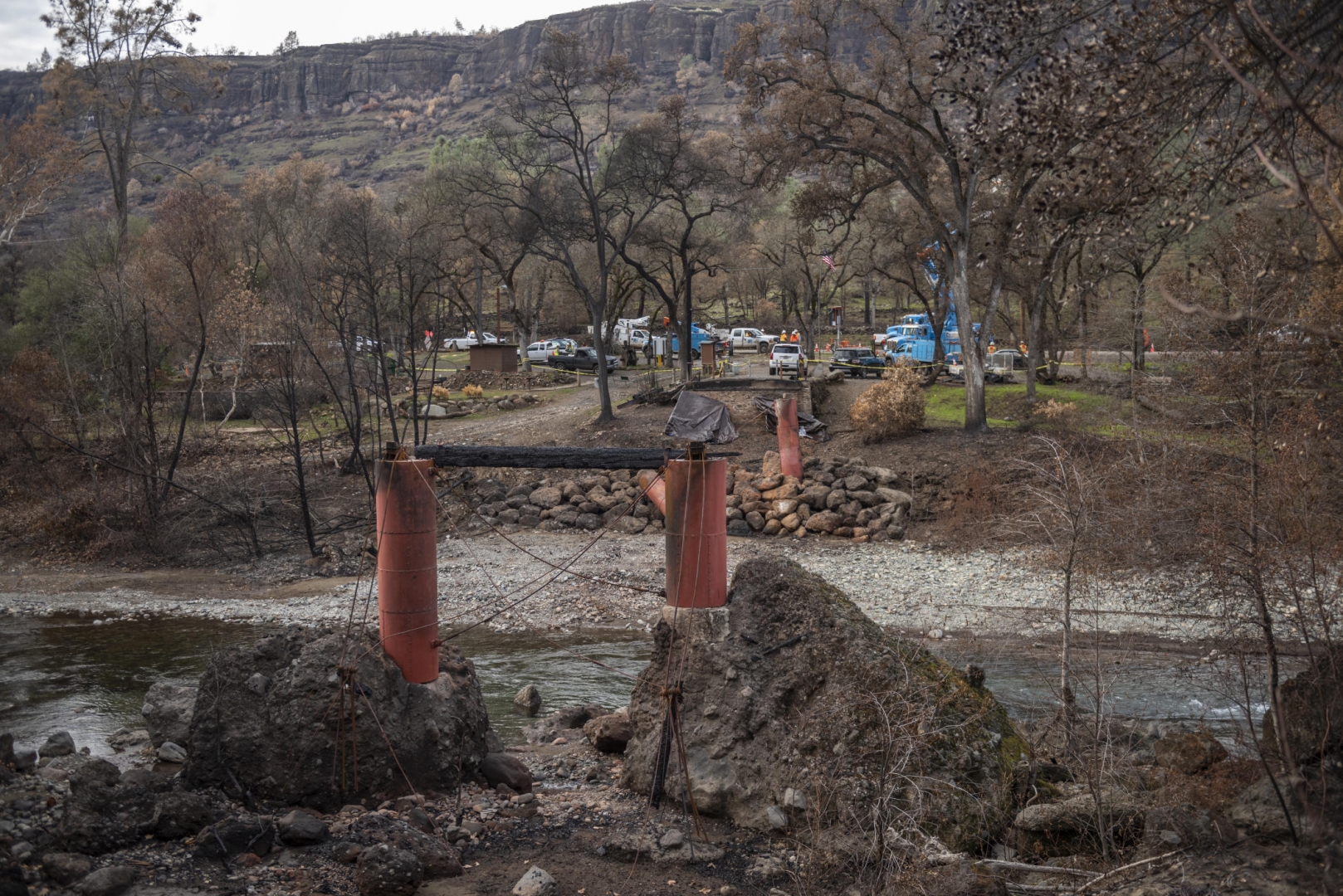Engineering an Icon

Editor’s Note: As we mark the one-year anniversary of the Camp Fire, we are honoring its impact on our community with a series of stories embracing the themes of remembrance, recovery, and resurgence.
They dream to build the nation’s highways, state-of-the-art subdivisions, and corporate offices of tomorrow.
And yet, a modest cottage and a small single-lane bridge have become today’s projects of honor for students and faculty within the College of Engineering, Computer Science, and Construction Management.
The Honey Run Covered Bridge opened the same year the University was founded—in 1887. When the Camp Fire decimated the town of Paradise and nearby communities in November 2018, the beloved bridge—site to countless marriage proposals, ceremonies, photoshoots, and community events—and its adjacent caretaker home were among the thousands of structures consumed by flames.
Students and faculty within the College of ECC eagerly stepped forward to support the rebuild of both structures. Chris Souder, chair of the construction management department, is serving as the project manager for the bridge rebuild pro bono while also supervising four student groups who have taken on the rebuilding of the caretaker home.

“It feels good to get involved in such an emotional thing,” said senior construction management major Julia Pellizzari. “And it’s nice to do something for the community before we graduate.”
This is the kind of project she dreamed to take on when she was a little girl. Inspired by her father, Steven Pellizzari (Construction Management, ’86), who owns an electrical contracting company, she said she knew she wanted to go into the construction industry at about age 6.
She grew up visiting Chico from their home in the Bay Area, and it became a natural choice to pursue her degree at her dad’s alma mater. Trips to the Honey Run Bridge were a part of her childhood, so she is honored to have a chance to return it to the community.
“That was always in my mind when I think of Chico,” she said. “It would be so nice to see it done and bring so many memories back for people.”
Four student groups—Associated General Contractors (AGC), Design Build Institute of America, IOTA International Construction Honor Society, and Women in Construction—are leading the project, each with a supervising contractor. The 900-square-foot caretaker home will arrive as a prefabricated structure, with individual walls and windows intact, and be assembled onto a foundation, ready for a roof and interior components.
AGC is managing the master schedule for the entire project, as well as the framing of the home, said president Humberto Cortez, a senior majoring in construction management. The students learned Wednesday that their permit to pour the foundation had been approved, and they planned to begin immediately.
“It means we can break ground,” he said. “We did layout this morning, and excavation begins tomorrow. We have that feeling of ‘This is finally going to take off.’ That’s a milestone for us.”
The preconstruction is as valuable of a learning experience as the build itself, Cortez said. From software selection and submitting permits to meeting deadlines and ensuring safety and quality control and assurance, the tasks students will be accomplishing in the weeks and months to come will be invaluable for their education, internship opportunities, and future careers.
Coordination and planning will also be critical, Pellizzari said. Everyone has a part to play, and the students know their pieces each have real-world implications.
“If they fall behind, we all fall behind,” she said. “And if they get done early, we need to be ready.”

The Women in Construction club, which Pellizzari founded last year and now serves as vice president, is tasked with the home’s finishing touches and interior. They are reaching out to subcontractors to guide them and supervise the installation of cabinets, counters, drywall, and other details.
Additionally, her group is focused on figuring out planned expenses, which will help students in asking for donations of time, money, and materials. Right now, the cost of the home is at about $120 per square foot, but the hope is to continue generating philanthropic support that would drive expenses below $100 per square foot.
They’ve already found a donor who will provide all the granite for the kitchen, Pellizzari said, noting she hopes those examples of generosity will create momentum. Asking for support is as much of a learning opportunity for the students as the construction of the home itself.
“Construction is such a people industry—that’s the biggest thing you do, is your people skills and reaching out and showing how it’s going to benefit them and it’s a good cause,” she said.
Souder hopes to enlist as many alumni in the two projects as possible. They’re off to a good start, he noted, with support from individuals like Jason Jurrens (Civil Engineering, ’98) of Quincy Engineering, which is doing the engineering work for the bridge at no charge, and Hailey Wagenman (Civil Engineering, ’16) of Crawford and Associates, which is providing some of the land surveying.
“We want to make it the best Chico story we can,” Souder said.

The bridge rebuild itself is still a ways off, due to the magnitude of necessary fundraising and environmental permits, but Souder anticipates students will play a role in it as well. The caretaker project, however, is an immediate way for them to put service-learning into action and create a symbol of recovery and hope for the bridge that will follow.
“Ever since I started teaching, the community service aspect has been built into the curriculum,” he said. “Some people might argue you are rebuilding a bridge to nowhere, but if you rebuild a bridge like this, it might inspire residents who are deciding between whether they want to stay or leave the area.”
Students expect to be building the home by early spring and then spend the rest of the semester working on interior and exterior finishes. They have set a bold goal to complete it before May, so that finals, end-of-semester projects, and Commencement don’t stand in the way and also so students can witness the final product of their labors.
Cortez anticipates as many as two dozen students within his chapter alone will be heavily involved in the project as it continues to ramp up, but he hopes that outreach to other students within the college as well as outside disciplines will generate an outpouring of assistance with labor and other tasks.
Working as an intern for Level 10 Construction, one of the largest general contractors in the United States, Pellazzari been part of projects for Google, Facebook, and Apple, but this one, she said, is truly special.
“This is for a family. It’s a historic home,” she said. “You always want to do your best, but in this case, we want to do even more.


